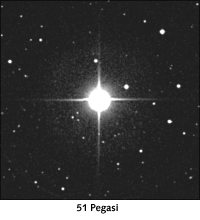
|
|
Hunt for Alien Worlds
|

|
|
Viewing Ideas
|

|
Before Watching
-
It's nearly impossible to actually see planets next to distant
stars. However, there are indirect ways to collect evidence that
can be used to infer their existence. Discuss with students the
difference between evidence and inference. Ask them to provide
examples of inference. For example, you can't see wind, but if
you look out the window and see a tree moving, you can infer
wind is the cause. Ask students to identify other things that
can be inferred by their effect on something else. As they watch
the program, have students look for ways scientists infer the
existence of planets.
After Watching
-
Ask students to consider the pros and cons of searching for and
finding planets outside our solar system. What reasons might
there be for conducting such a search? What kinds of questions
or concerns might be raised? How might the discovery of an
Earth-like planet affect us?
Scientists believe the following stars may have orbiting planets:
|
51 Pegasi
Distance: 42 light years
Location: near Pegasus
RA: 22h 57.5m
Dec: +20deg.46'
|
47 Ursae Majoris
Distance: 44 light years
Location: near Ursa Major
RA: 10h 59m
Dec: +40deg.25'
|
|
70 Virginis
Distance: 78 light years
Location: near Virgo
RA: 13h 28.26m
Dec: +13deg.46'
|
|

RA, or Right Ascension, tells your how far away an object is
east or west from a fixed meridian in the sky. Dec, or
Declination, tells you how far above or below the celestial equator
an object is. Positive Dec numbers are in the Northern Hemisphere.
|

|
